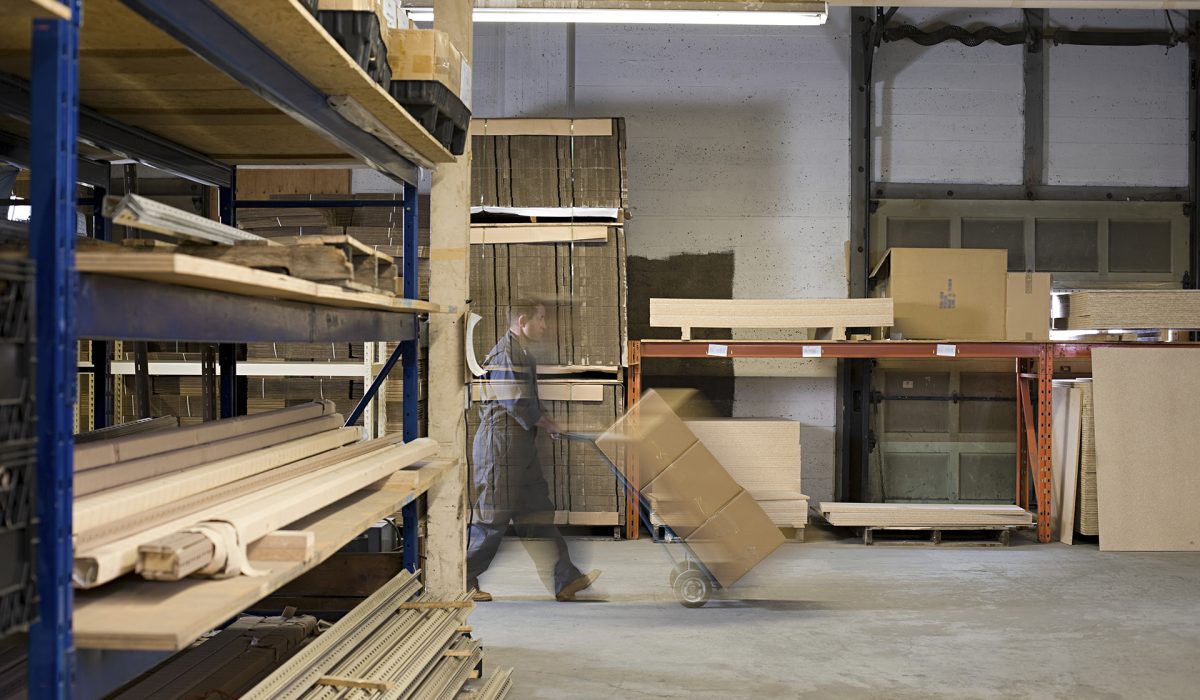
Good heating isn’t just about raw power – it’s about efficiency, comfort, and control. Airrex diesel infrared heaters have proven that steady warmth doesn’t have to mean high running costs.
The following real-world examples show how Airrex keeps large workshops, warehouses and industrial spaces warm throughout the winter – while keeping fuel use impressively low.
Proven results with infrared heating: only 2.5 litres per day
Many people are surprised to discover how little fuel Airrex diesel heaters actually use. They are designed to heat spaces evenly and efficiently, without wasting energy where it isn’t needed.
Grels Ström, a retired technical expert from Rex Nordic, uses an Airrex heater in his 480 m³ warehouse. The building has ceiling insulation, plasterboard walls, and a concrete floor – a structure that holds heat extremely well. Previously, the space was heated with direct electric heating, but switching to diesel has cut both consumption and costs dramatically.
Ström explains: “At first, fuel use can be a little higher. It usually takes about a week or so for consumption to settle. Infrared heat is absorbed directly into the structures, and once they’re properly warm, surprisingly little fuel is needed to keep the temperature steady.”
He maintains an indoor temperature of +15 °C even when it’s around 0 °C outside, and daily fuel consumption averages just 2.5 litres of diesel. His Airrex heater has run reliably without any issues or need for servicing.
A brief period of higher consumption at the start is perfectly normal – the building materials often contain moisture that needs to dry out first. Once they’re dry, the system reaches maximum efficiency.
This is where Airrex infrared technology excels: the heat is stored in the structure and released steadily back into the space. After that, only short heating cycles are needed to maintain comfort – and the savings are clearly reflected in the fuel bill.
Smart thermostat keeps consumption under control
Every Airrex infrared heater is equipped with an intelligent built-in thermostat that keeps fuel use to a minimum. The unit starts and stops automatically to maintain the desired temperature. Diesel is metered precisely – only as much as needed and not a drop more – which keeps consumption extremely low.
In everyday use, the heater runs independently. Once the building’s structures are warm, the unit maintains a steady temperature with short operating cycles. There’s no need for constant adjustment – the thermostat does it all automatically.
Unlike traditional fan heaters, Airrex units don’t blow hot air towards the ceiling or outside when doors open. Infrared heat is directed straight into walls, floors, and machinery, which absorb and store the warmth. As a result, energy use stays exceptionally low, and if a door is opened, the stored heat quickly restores the indoor temperature.
Long-term savings with Airrex diesel heaters
Markku Ojanen has experienced the same results first-hand. He heats a 360 m² insulated hall, three metres high, which used to rely on radiators and fan heaters. The old system consumed around 2,500 litres of oil each year.
After switching to an Airrex AH-300 diesel heater, the difference was immediate. In the first winter alone, fuel use dropped to about 1,000 litres per year – less than half of what it was before.
He keeps the hall at +9–10 °C, raising it to +13 °C while working. Over ten years, the savings have totalled around £8,500–£9,000, and the same heater is still operating flawlessly today.
“Maintenance has always been done on time, but it’s never needed a single repair,” Ojanen says. “It just keeps running.”
Sustainable warmth you can feel
Airrex infrared heating works on a simple but powerful principle: instead of heating air, it radiates warmth directly into surrounding surfaces. Floors, walls and equipment absorb the heat – just like sunlight warms your skin on a cool day.
Once these surfaces are warm, they release the heat evenly back into the room, creating a consistent indoor temperature. This stored warmth acts as a natural heat buffer, which keeps fuel consumption low after the first weeks of use. The heater only runs as much as is needed to maintain the balance.
That’s the key difference between infrared and traditional fan heaters. Infrared heat doesn’t escape when doors open or air moves. The stored heat within the structure quickly restores the temperature, keeping warmth where it’s needed and savings ongoing.
Site 1 – Warehouse
Type: Warehouse 480 m³
Structure: Concrete floor, insulated ceiling, plasterboard walls
Previous heating: Direct electric
New solution: Airrex diesel infrared heater
Maintained temperature: +15 °C in mild winter conditions
Average daily fuel consumption: ~2.5 litres of diesel
Maintenance: Reliable operation, almost no servicing required
Savings: Considerably lower consumption compared with the previous system
Site 2 – Industrial hall
Type: Insulated hall 1 080 m³ (360 m², 3 m height)
Previous system: Radiators + fan heaters
Previous fuel use: ~2,500 litres of oil per year
New solution: Airrex AH-300 diesel heater
Current fuel use: ~1,000 litres per year
Years in use: 10 years
Estimated savings over 10 years: £8,500–£9,000
Reliability: Same unit still operating perfectly, no repairs needed
